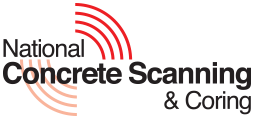Reliable Concrete Scanning Experts in Victoria
Expert Concrete Scanning Using Advanced GPR Technology
At National Concrete Scanning & Coring, we specialise in non-destructive concrete scanning services using cutting-edge Ground Penetrating Radar (GPR) technology. Based in Victoria, we work across Melbourne and regional areas, helping construction, civil, and engineering clients gain vital insights before they cut, core, or drill.
Whether you're installing utilities, creating structural openings, or planning renovations, our experienced technicians deliver precise, real-time data to ensure safety and avoid costly mistakes. We use state-of-the-art Proceq™ GPR systems, combined with expert analysis, to detect structural and embedded elements—without damaging the concrete.
With years of experience and a strong safety-first approach, we support everything from residential builds to large-scale commercial and industrial projects. Our service is fast, accurate, and backed by detailed reporting, helping you work with confidence and reduce the risk of costly errors.
What Is Concrete Scanning?
Concrete scanning is a non-invasive method used to detect objects embedded within concrete. It plays a crucial role in construction and renovation by identifying hidden hazards like live electrical conduits, rebar, post-tension cables, and voids—before any cutting, coring, or drilling takes place.
At National Concrete Scanning, we use Ground Penetrating Radar (GPR) to scan beneath the concrete surface and generate high-resolution images of what lies inside. This process helps prevent structural damage, personal injury, and expensive rework.
Our concrete scanning services are ideal for:
- Pre-renovation assessments
- Structural analysis
- Safety checks before drilling or cutting
- Utility location in slabs, columns, or walls
- QA reporting for compliance and handover
What We Can Detect
Using high-performance GPR scanning equipment, we can identify and map a wide range of subsurface features, including
- 2D & 3D Rebar Layouts
- Post-Tension Cables
- Structural Steel Fixings
- Live Power Conduits
- Voids and Air Gaps
- Concrete Thickness (Single-Side Measurement)
- Beam and Column Depths
- Multiple Layers of Reinforcement
How Our Concrete Scanning Process Works
Our scanning process is designed for accuracy, safety, and minimal disruption to your site:
Step 1: Planning and Assessment
We consult with you to understand your project scope and identify key areas for scanning. Our technicians assess the site conditions and plan the best approach.
Step 2: Equipment Setup and Calibration
We deploy our Proceq™ GPR Live systems—calibrated to your project’s needs. These world-leading scanners combine radar with Augmented Reality (AR) for highly detailed, large-scale results.
Step 3: Surface Preparation
We clear and clean the scanning area to ensure accurate data collection, removing debris and obstacles that may affect signal clarity.
Step 4: Scanning Execution
Our technicians systematically scan the surface using a grid pattern, collecting real-time data as radar waves penetrate the concrete and bounce back from embedded objects.
Step 5: Data Analysis and Reporting
We analyse the scan results to interpret what lies beneath. You’ll receive a detailed report with clear visuals, measurements, and expert insights into the structure’s internal features.
Step 6: Recommendations and Next Steps
Based on the findings, we can advise on safe coring, drilling, or cutting strategies—or highlight areas that need structural attention. Our goal is to help you move forward confidently and safely.
Why Use Ground Penetrating Radar (GPR)?
- Non-Destructive Testing—No cutting, no drilling, no damage
- Real-Time Results—Instant insights during on-site scanning
- High Accuracy—Detect multiple layers of reinforcement
- Improved Safety—Avoid hitting live wires or critical structures
- Cost Savings—Prevent rework, repair bills, and project delays
Thanks to advancements in GPR scanning, including the integration of AR and deeper signal penetration, GPR is now more effective and affordable than ever—making it a standard solution across the construction industry.
Areas We Service
We proudly offer GPR concrete scanning services across
- Melbourne Metro
- Greater Victoria
- Regional Victoria
- South & Eastern States (by arrangement)
Book your concrete scanning service today. Call 1300 007 226 to speak with our experienced team.




